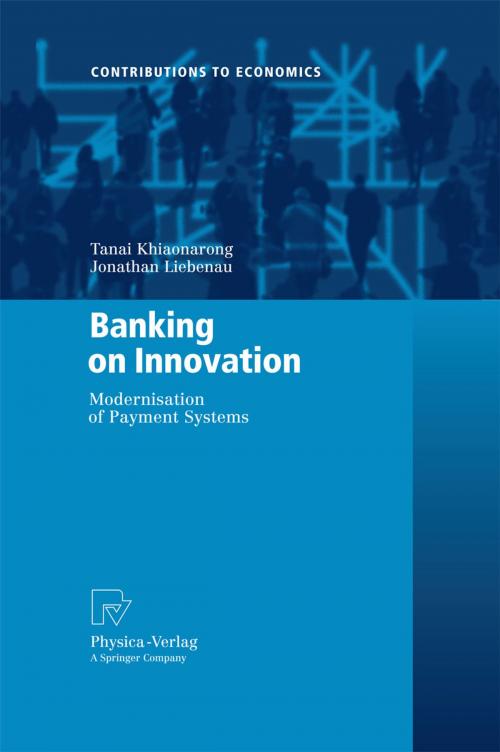Banking on Innovation
Modernisation of Payment Systems
Business & Finance, Economics, Macroeconomics, Finance & Investing, Finance| Author: | Tanai Khiaonarong, Jonathan Liebena | ISBN: | 9783790823332 |
| Publisher: | Physica-Verlag HD | Publication: | June 1, 2009 |
| Imprint: | Physica | Language: | English |
| Author: | Tanai Khiaonarong, Jonathan Liebena |
| ISBN: | 9783790823332 |
| Publisher: | Physica-Verlag HD |
| Publication: | June 1, 2009 |
| Imprint: | Physica |
| Language: | English |
Innovation in banking should be directed at improving the infrastructure that fosters efficient financial services and international trade. In this work, innovation theory is used to show how modern payment systems have transformed the technology of banking and facilitated changes in the strategy and structure of financial services organisations. Design, implementation and dissemination of payment systems are described and the analysis of their costs and benefits is combined with case studies of banks undergoing change. By studying firm capabilities, competencies, and resources, the approach is extended to services in general and linked to the ability of firms to compete and promote national economies. Payment systems vary and advanced and developing economies face obstacles in their legal and technical infrastructure, and maturity of banks. By adopting an international perspective, the book offers a unique comparative analysis that shows what kind of investments are likely to be effective.
Innovation in banking should be directed at improving the infrastructure that fosters efficient financial services and international trade. In this work, innovation theory is used to show how modern payment systems have transformed the technology of banking and facilitated changes in the strategy and structure of financial services organisations. Design, implementation and dissemination of payment systems are described and the analysis of their costs and benefits is combined with case studies of banks undergoing change. By studying firm capabilities, competencies, and resources, the approach is extended to services in general and linked to the ability of firms to compete and promote national economies. Payment systems vary and advanced and developing economies face obstacles in their legal and technical infrastructure, and maturity of banks. By adopting an international perspective, the book offers a unique comparative analysis that shows what kind of investments are likely to be effective.















